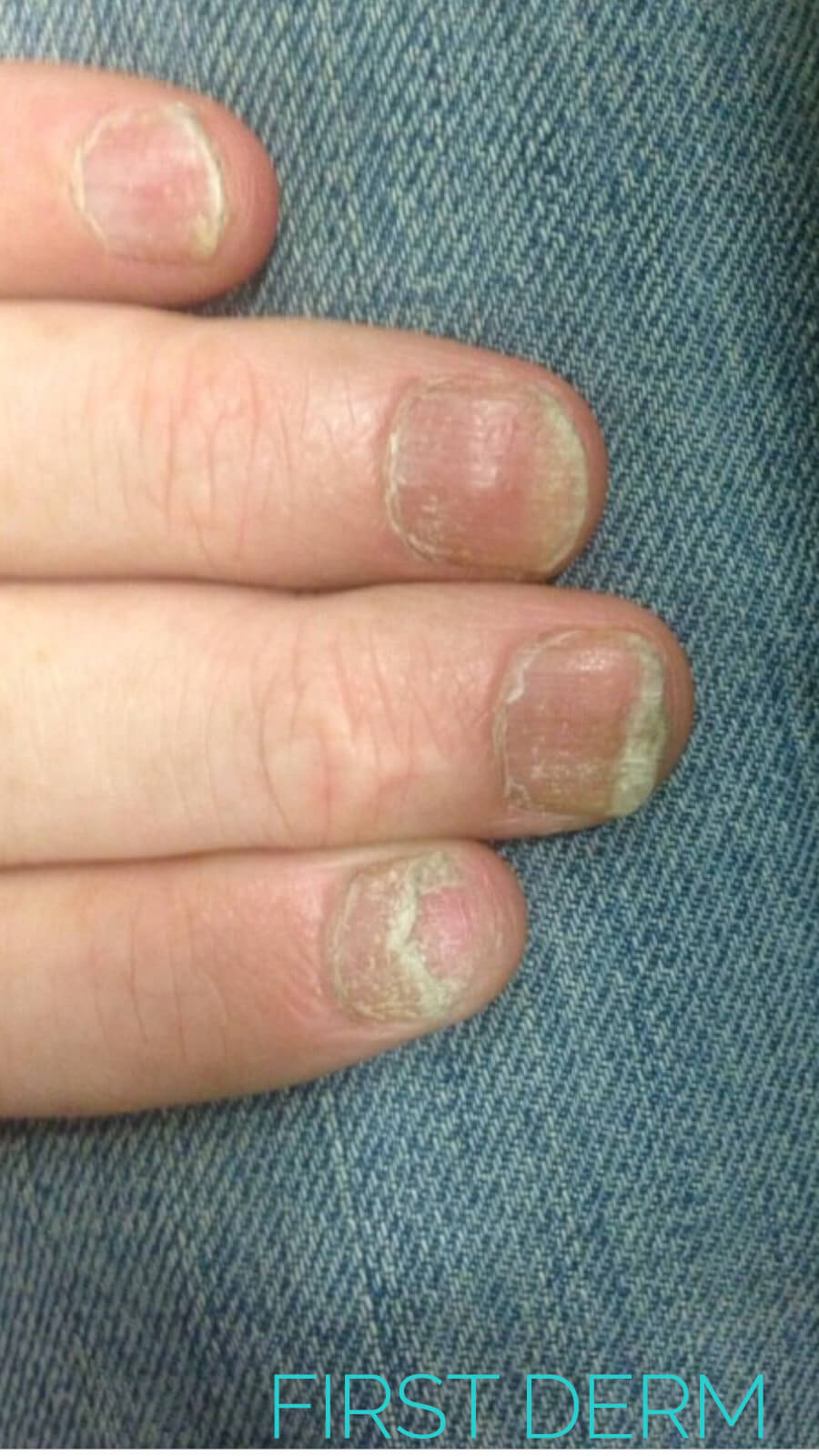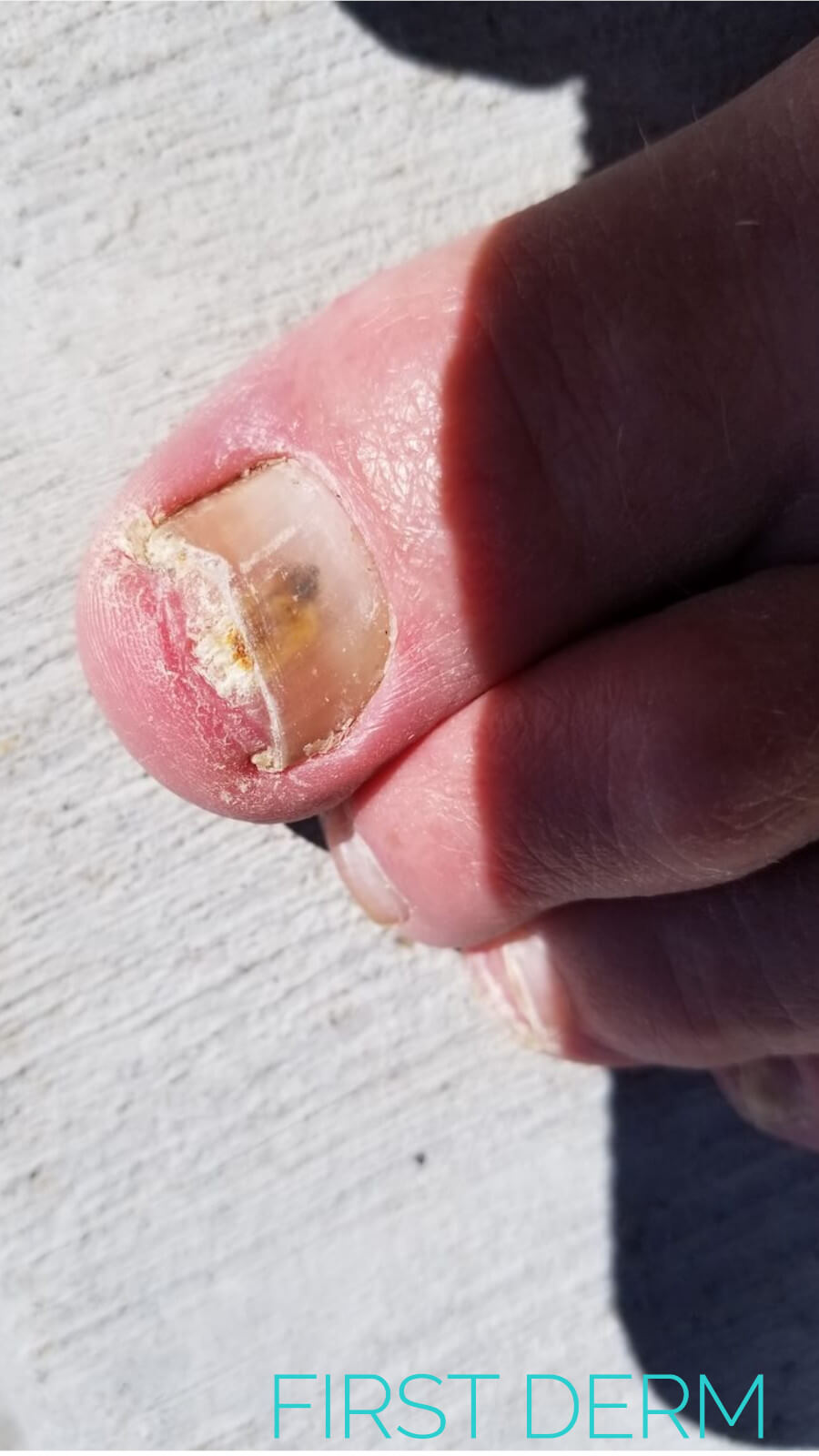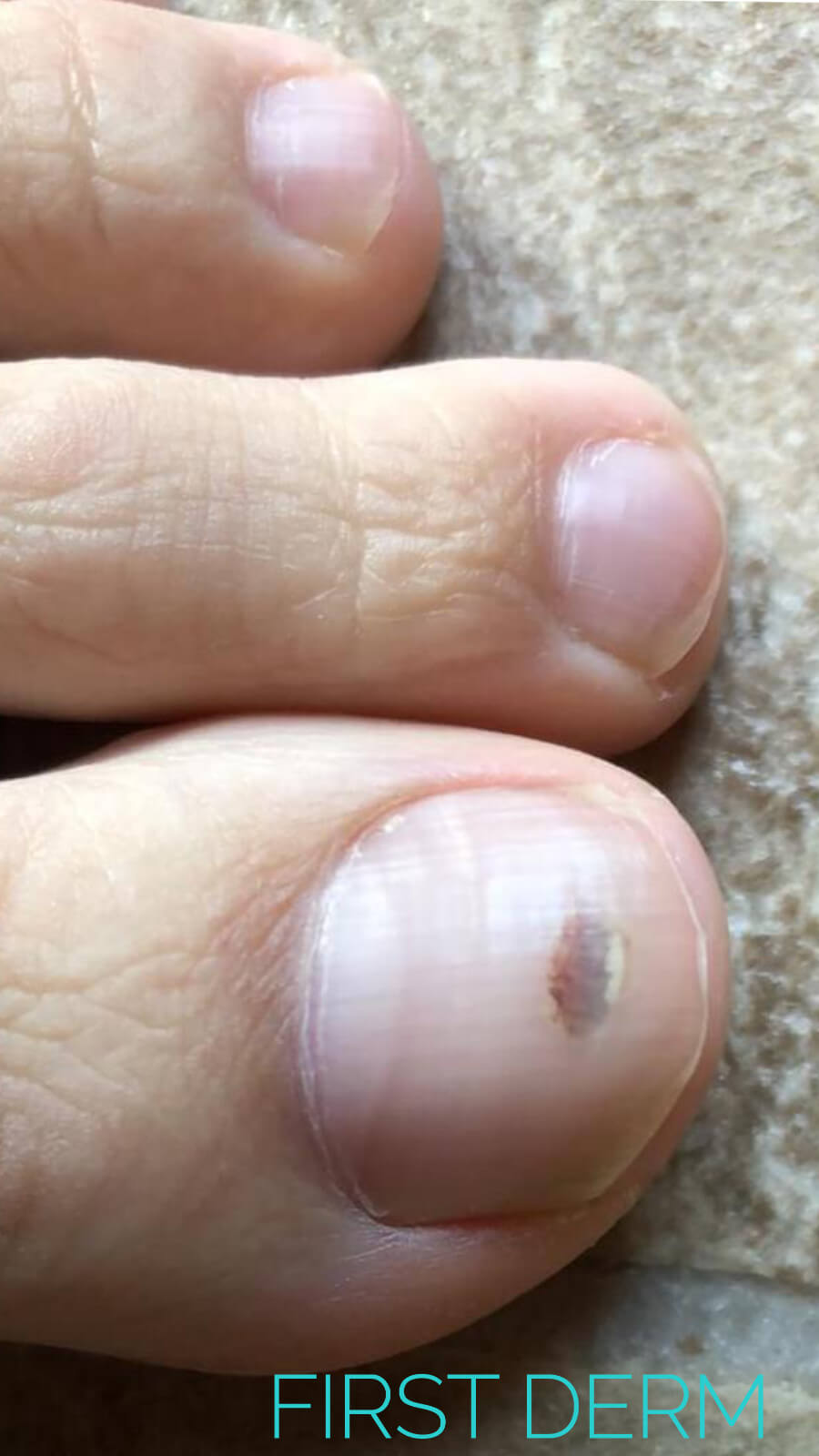Common nail discoloration
Medically reviewed by The Dermatologists and written by Dr. Carol Mastropierro and Dr. Alexander Börve
Common
More than XXX US cases per year
- Often self-diagnosable
- Symptoms: Inflammatory skin condition, blackheads, whiteheads, pimples and deeper lumps
- Color: Typically red
- Location: On the face, neck, chest, back, shoulders and upper arms
- Treatment: Topical medications, including benzoyl peroxide, antibiotics, retinoids and salicylic acid
ICD-10: L70.0
ICD-9: 706.1
Related Blog Posts:
Acne Fighting Lifestyle Changes
Hate your acne? Avoid these 5 common pimple pitfalls
The Top 5 Newborn Skin Conditions for Parents to Watch For
Last updated on March 01, 2024
Nails are largely composed of keratin, a hard protein which is also forming skin and hair. The average growth rate for nails is 0.1 mm each day (which equals to 1 centimeter in 100 days). Fingernails grow faster than toenails and generally the growth is faster in young people, in males, and during summer months.
Normally the nails appear of a light skin color due to the vascular nail bed supporting the nail plate. Out of the nail plate, the nail normally appears white.

Common nail discoloration nail dystrophy
Alteration is nail color may be due to
- The use of dyes
- Tobacco smoking
- Medications, such as chemotherapy drugs
- Infections of the nail bed
- Metals toxicity, such as silver and copper
- Several systemic illnesses
White discoloration of nails
This is known as Leukonychia. Most commonly this condition is harmless and can present as pin-point lesions or as white strikes. This occurs as a result to minor trauma to the nail in healthy individuals. Sometimes, however, white spots in the nails can be a sign of nutritional deficiencies, especially related to low calcium levels in the body.

Common nail discoloration leukonychia
Yellow discoloration of nails
- This is mostly due to constant use of nail polish, especially of darker colors, particularly if applied straight to the nail without the aid of a base coat. Physiologically, the dye in the nail polish interacts with the keratin of the nail, causing its discoloration and brittleness. Acetone based nail polish removers can worsen the yellowing of your nails, as it strips the nail of its natural protective oils and allows the dissolving polish to bind the naked nail. Dermatologists advice that the safest way to get your nails back to their normal color is to take a break from using polish and, by doing so, allowing the stained nail to grow out. Do not use lemon juice or other chemicals as often recommended on different websites, as this would damage your nails even further!
- Fungal Infection: this is known as Onychomycosis (also called tinea unguium). A fungal nail infection occurs from the overgrowth of fungi in, under, or on top of the nail. Fungi thrive in warm, moist environment, hence, most commonly affects the toenails as compared to fingernails. Fungal infections normally develop over time, leading to thickening and accumulation of debris underneath the nail- both of which can lead to a yellow color. Onychomycosis is treatable with over the counter antifungals.

Nail discoloration due to fungal infection
- Yellow nail syndrome: in this condition, nails get thicker and do not grow as fast as normal. This is often the manifestation of malignancy, lymphedema, pleural effusion or rheumatoid arthritis.
Blue discoloration of nails
- This condition is known as cyanosis. It occurs when there is lower than normal oxygen in the blood, making the nail plate appear purplish. Cyanosis is sign of either a physiological response to cold temperatures or systemic disorders. If normal nail color returns after warming up or massaging your hands, the blue color was likely a vasoconstriction response to cold and not a sign of systemic illness. On the contrary, persisting cyanosis may be a symptom of:
- Disease of the lungs, such as COPD and asthma
- Disease of the heart, such as congenital heart diseases and congestive heart failure
- Abnormal blood vessels reaction, such as Raynaud’s Phenomenon
Black discoloration of the nail

Nail discoloration – Melanonychia: stripe that starts at the bottom of the nail and grows towards the top
Melanonychia is the term used to describe a black color of the nail. It may affect either fingernails or toenails. The discoloration usually presents as a stripe that starts at the bottom of the nail and grows towards the top. Melanonychia manifests when melanocytes, the cells responsible for pigment, deposit melanin into the nail bed. This could be seen in:
- Subungual nevus or melanoma
- Pregnancy
- Lichen Planus
- Psoriasis

Nail psoriasis, showing discoloration, pitting, and crumbling of the fingernails.
- Related to phenytoin, sulphonamides and antimalarial drugs
- Trauma to the nail could cause also be a common cause of black nail appearance. In fact, direct damage to the nail surface can cause a small collection of blood to accumulate under the nail. This is known as subungual hematoma, which leads to blackish discoloration of the nail bed.

Direct injury to the nail surface can result in a subungual hematoma, where a small pool of blood gathers beneath the nail, causing the nail bed to appear blackish in color
These are just some of the signs of abnormal fingernails. Having any of these nail manifestations is not proof of any medical condition. Ask our online dermatologists for any questions about your nails.
References
- Fawcett RS, Linford S, Stulberg DL. Nail abnormalities: clues to systemic disease. Am Fam Physician. 2004;69(6):1417-1424.
- Baran R. Comment reconnaître et traiter un psoriasis unguéal [How to diagnose and treat psoriasis of the nails]. Presse Med. 2014;43(11):1251-1259. doi:10.1016/j.lpm.2014.06.011
- Dupond AS, Magy N, Humbert P, Dupond JL. Manifestations unguéales des maladies générales [Nail manifestations of systemic diseases]. Rev Prat. 2000;50(20):2236-2240.
- Dupond AS, Magy N, Humbert P, Dupond JL. Manifestations unguéales des maladies générales [Nail manifestations of systemic diseases]. Rev Prat. 2000;50(20):2236-2240.
Ask a Dermatologist Now
Anonymous, fast and secure!

Dr Carol Mastropierro is a practicing doctor in the UK, currently pursuing a degree in dermatology. Her passion is healthy skin.

